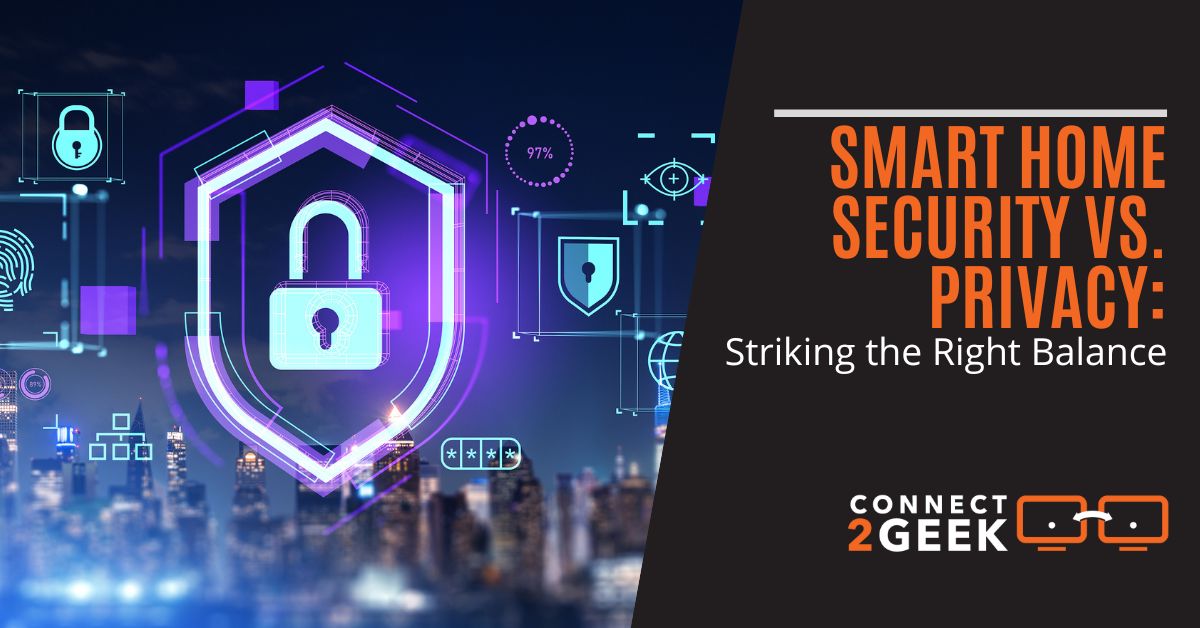Many smart home devices offer convenience but also pose security risks due to exploitable weaknesses. In a recent study, it was revealed that 70% of smart home devices have vulnerabilities that hackers can exploit. However, by understanding and optimizing privacy settings, you can significantly reduce the risk of a security breach. This guide will provide you with necessary knowledge to keep your smart home safe and secure, empowering you to take control of your privacy settings and safeguard your connected home.
Key Takeaways:
- Smart home devices can be vulnerable: 70% of smart home devices have exploitable weaknesses, making privacy settings crucial to maximize security.
- Optimize privacy settings: Adjust data collection, location sharing, voice recordings, and sharing with third parties to minimize risks.
- Additional steps for enhanced security: Minimize data collection, manage app permissions, and consider a separate network for advanced security measures.
- Stay informed and proactive: Security is an ongoing process, stay updated on threats, use strong passwords, enable two-factor authentication, and regularly update device software.
- Create a balance between convenience and security: With effort and vigilance, enjoy the benefits of a smart home without compromising your privacy and security.
To maximize security on smart home devices and protect privacy, consider the following steps
- Strong, Unique Passwords and Multifactor Authentication: Use strong, unique passwords for each device and set up multifactor authentication when available[1].
- Secure Connectivity Protocols: Choose devices with secure connectivity protocols to prevent unauthorized access and data exposure[1].
- Keep Device Firmware Updated: Regularly update device firmware to ensure the latest security protocols are in place[1].
- Practice Digital Hygiene: Be mindful of privacy settings and avoid cloud-based devices that may expose personal data to unauthorized access[1].
- Use a Separate Guest Wifi Network: Create a separate guest wifi network for smart home devices and other appliances to shield them from the main network[2].
- Implement VLANs: Use Virtual Local Area Networks (VLANs) to isolate IoT devices and prevent unauthorized access[2].
- Use a DNS Sinkhole: Implement a DNS sinkhole like Pi-hole to suppress unnecessary network calls and minimize risks[2].
- Choose Reputable Vendors: Opt for reputable vendors with a track record of secure products to ensure reliable and secure technologies[3].
- Secure Wi-Fi Networks: Ensure robust encryption for home Wi-Fi networks to protect sensitive data[3].
- Limit Data Sharing: Control data sharing through privacy settings on smart devices to minimize risks[3].
- Regularly Review Privacy Policies: Stay informed about the privacy policies and data handling practices of cloud service providers[5].
- Limit Data Collection: Review device settings and permissions to disable unnecessary data collection and minimize potential misuse or data breaches[5].
By following these steps, you can enhance the security of your smart home devices and protect your privacy effectively.
Understanding the Threat Landscape
Data Collection Risks in Smart Devices
Risks associated with data collection in smart devices are a growing concern in privacy and security. Smart home devices such as voice assistants and thermostats constantly collect data to personalize user experiences. However, this data collection creates a treasure trove for hackers, potentially exposing personal information and granting unauthorized access to homes.
Potential for Unauthorized Access
One of the significant risks of smart home devices is the potential for unauthorized access. A security breach on a smart home device could not only expose personal information but also be used to launch attacks on other devices on the network. With 70% of smart home devices found to have exploitable weaknesses, it’s crucial for users to understand the risks and take proactive measures to enhance security.
Navigating Privacy Settings and Controls
Locating and Adjusting Device Settings
The first step to maximizing security on your smart home devices is to locate and adjust the privacy settings. A recent study revealed that 70% of smart home devices have exploitable weaknesses, making it crucial to take control of your privacy settings. These settings can usually be found within the device’s app or on the manufacturer’s website, providing you with the tools to reduce the risk of a security breach.
Optimizing Key Privacy Features
Device privacy settings offer key features that can significantly enhance the security of your smart home. By adjusting data collection preferences, disabling location sharing unless necessary, and managing voice recordings, you can minimize the risk of exposing personal information to hackers. Additionally, consider reviewing and disabling data sharing with third parties unless you trust the company and understand how your data will be used.
The good news is that most smart home devices offer privacy settings within their apps and on manufacturer websites. By understanding these settings and taking control, you can significantly reduce your risk of a security breach.

Advanced Security Measures for Smart Devices
Advanced security measures for smart devices include implementing strong authentication mechanisms like multi-factor authentication or biometric verification, utilizing encryption protocols like TLS/HTTPS and AES/RSA for data in transit and at rest, promptly installing software updates and security patches released by manufacturers, isolating the smart home network from the primary internet connection, implementing systems that monitor for and alert on potential security breaches, utilizing VPNs, secure wireless configurations, and firewalls, encrypting data stored on individual smart devices, leveraging artificial intelligence and machine learning for predictive security and behavioral analysis[1][2][3]. These measures collectively enhance the security of smart devices and protect them from cyber threats.
Creating a Segregated Wi-Fi Network
Creating a separate Wi-Fi network specifically for your smart home devices can provide an extra layer of security. By segregating your smart home devices onto a separate network, you can prevent potential hackers from accessing other devices on your main network, such as computers or smartphones. This isolation reduces the risk of a security breach spreading across all your connected devices.
Regular Software Updates and Strong Password Policies
Regularly updating the software on your smart home devices is crucial for keeping them secure. Manufacturers often release updates to patch security vulnerabilities, so make sure to install them promptly. Additionally, implementing strong password policies for all your devices can further enhance security. Using unique, complex passwords and enabling two-factor authentication whenever possible adds an extra layer of protection against unauthorized access.
Summing up
Hence, optimizing privacy settings on smart home devices is crucial in maximizing security and safeguarding personal information from potential cyber threats. By understanding the threat landscape and taking control of privacy settings such as data collection, location sharing, and sharing with third parties, users can significantly reduce the risk of a security breach. Additionally, implementing strong passwords, enabling two-factor authentication, and regularly updating device software are vital steps in maintaining a secure smart home environment. With a proactive approach to privacy and security, individuals can enjoy the convenience of smart home technology without compromising their personal data.
FAQ
Q: What are smart home devices?
A: Smart home devices are electronic devices connected to the internet that allow for remote monitoring and control of functions within a household.
Q: Why is security important for smart home devices?
A: Security is crucial for smart home devices to prevent unauthorized access, protect personal data, and ensure the safety of the household.
Q: What are privacy settings on smart home devices?
A: Privacy settings on smart home devices allow users to control the type and amount of data collected, shared, and accessed by the devices.
Q: How can I optimize privacy settings on my smart home devices?
A: You can optimize privacy settings by reviewing and adjusting data collection, location sharing, voice recordings, and third-party sharing preferences within the device’s app or manufacturer’s website.
Q: What are some additional steps to enhance smart home security?
A: Additional steps include minimizing data collection, managing app permissions, considering a separate network for smart devices, using strong passwords, enabling two-factor authentication, and keeping device software up to date.
Q: What should I do if I suspect a security breach on my smart home device?
A: If you suspect a security breach, immediately disconnect the device from the network, update its software, change passwords, and contact the device manufacturer for further assistance.
Q: How can I stay informed about new security threats for smart home devices?
A: Stay informed by following reputable cybersecurity sources, subscribing to security newsletters, attending webinars, and regularly checking for software updates from the device manufacturer.
Citations:
[1] https://livablesmarthomes.com/maximizing-privacy-in-your-smart-home/
[2] https://www.reddit.com/r/privacy/comments/15ts50p/how_to_maximize_privacy_in_homes_with_smart/
[3] https://staysafe.org/home-safety/home-security-for-smart-homes-integrating-security-with-home-automation/
[4] https://www.ncbi.nlm.nih.gov/pmc/articles/PMC9654737/
[5] https://www.linkedin.com/pulse/smart-home-security-protecting-iot-devices-ramgopal-nayak-



Leave a Reply